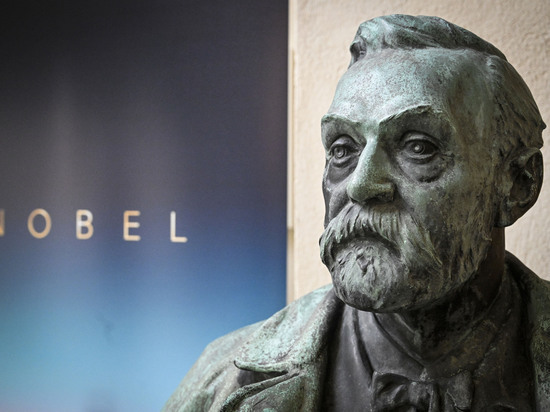Nobel Prize awarded for breakthroughs in quantum technology
[ad_1]

On Tuesday, October 4, the Royal Swedish Academy of Sciences announced the names of the Nobel Prize winners in physics. The 2022 Laureates are Alain Aspe, John F. Clauser, and Anton Zeilinger, “for experiments with entangled photons, finding violations of Bell’s inequalities, and pioneering quantum computer science.”
As explained on the Nobel Prize website, the results obtained by this year’s laureates have cleared the way for new technologies based on quantum information. Using pioneering experiments, Alain Aspe, John Clauser, and Anton Zeilinger have demonstrated the potential for investigating and controlling particles in entangled states. What happens to one particle in an entangled pair determines what happens to the other, even if they are too far apart to affect each other. The development of experimental instruments by the laureates laid the foundation for a new era of quantum technology.
“The unspeakable effects of quantum mechanics are beginning to find applications,” says the Nobel Prize website. “At present, there is a vast area of research, including quantum computers, quantum networks, and secure communication with quantum encryption.
One of the key factors in this development is how quantum mechanics allows two or more particles to exist in a so-called entangled state. What happens to one of the particles in an entangled pair determines what happens to the other particle, even if they are far apart.
For a long time, the question was whether the correlation was due to the fact that the particles in the entangled pair contained hidden variables, instructions telling them what result they should give in the experiment. In the 1960s, John Stuart Bell developed the mathematical inequality named after him. It says that in the presence of hidden variables, the correlation between the results of a large number of measurements will never exceed a certain value. However, quantum mechanics predicts that a certain type of experiment will violate Bell’s inequality, resulting in a stronger correlation than would otherwise be possible.”
French physicist Alain Aspe is known as a specialist in quantum optics, the theory of hidden variables and quantum entanglement.
The American physicist John Clauser has also established himself as a leading specialist in quantum mechanics.
Member of the Austrian Academy of Sciences and foreign member of the Russian Academy of Sciences Anton Zeilinger is an Austrian physicist who gained fame for his pioneering work in the field of quantum information. He pioneered quantum teleportation using photons.
The names of the nominees nominated for the Nobel Prize in Physics and other information about the nominations are kept secret and can only be revealed after 50 years. The nomination and selection process begins with the Nobel Committee for Physics sending out confidential forms to qualified persons. The right to submit proposals for the Nobel Prize in Physics is enjoyed by: Swedish and foreign members of the Royal Swedish Academy of Sciences; members of the Nobel Committee for Physics; Nobel Prize winners in physics; full-time professors of physical sciences at universities and institutes of technology in the Scandinavian countries, as well as at the Karolinska Institute (Stockholm), etc.
The Royal Swedish Academy of Sciences is responsible for selecting the winners of the award, which appoints a working body (the Nobel Committee for Physics) that reviews the nominations and submits proposals to determine the final candidates.
In total, from 1901 to 2021, the Nobel Prize in Physics was awarded 115 times, and only in 47 cases the award went to a single laureate, in other cases it was divided among several scientists. So, last year the award was divided into three shukuro Manabe (USA) and Klaus Hasselman (Germany), as well as Giorgio Parisi (Italy) – for “innovative contribution to our understanding of complex physical systems”
Thus, over the past 120 years, 218 people have received the prize – among them the American scientist John Bardeen – the only two-time Nobel laureate in physics in history (for the first time he received the prize together with William Bradford Shockley and Walter Brattain in 1956, and in the second – in 1972 – together with Leon Neil Cooper and John Robert Schrieffer for the fundamental theory of conventional superconductors).
Only four women have won the Physics Prize. The last awarded representative of the fair sex was the year before last Andrea Getz. Prior to her, the Nobel in this nomination was awarded to Marie Curie (by the way, she received not only the award in physics in 1903, but also the prize in chemistry in 1911), Maria Goeppert-Mayer (she was awarded jointly with Hans Jensen in 1963 “for discoveries concerning the shell structure of the nucleus”), as well as Donna Strickland from Canada (2018 – for “groundbreaking inventions in the field of laser physics”).
The youngest recipient in this category for more than a century has been Lawrence Bragg of Australia, who received the prize in 1915 at the age of 25 with his father William Henry Bragg for his services to the study of crystals using X-rays. And the oldest of the “Nobel Prize winners” in physics – in 2018, was 96-year-old Arthur Ashkin.
Another interesting statistic is that about a quarter of all Nobel Prize winners in physics are immigrants – that is, those who have died or currently live in a country other than their country of birth.
Several of our compatriots have received the Nobel Prize in Physics in the past. In 1958, three Soviet scientists were awarded – Pavel Cherenkov, Ilya Frank and Igor Tamm, in 1962 the prize was awarded to Lev Landau, and in 1964 to Nikolai Basov and Alexander Prokhorov. In 1978, the Nobel Prize in Physics was awarded to Peter Kapitsa. In 2000, the Russian scientist Zhores Alferov became the Nobel laureate in physics, and in 2003 Alexei Abrikosov and Vitaly Ginzburg became laureates. In 2010 Andrey Geim and Konstantin Novoselov received the award.
[ad_2]
Source link








